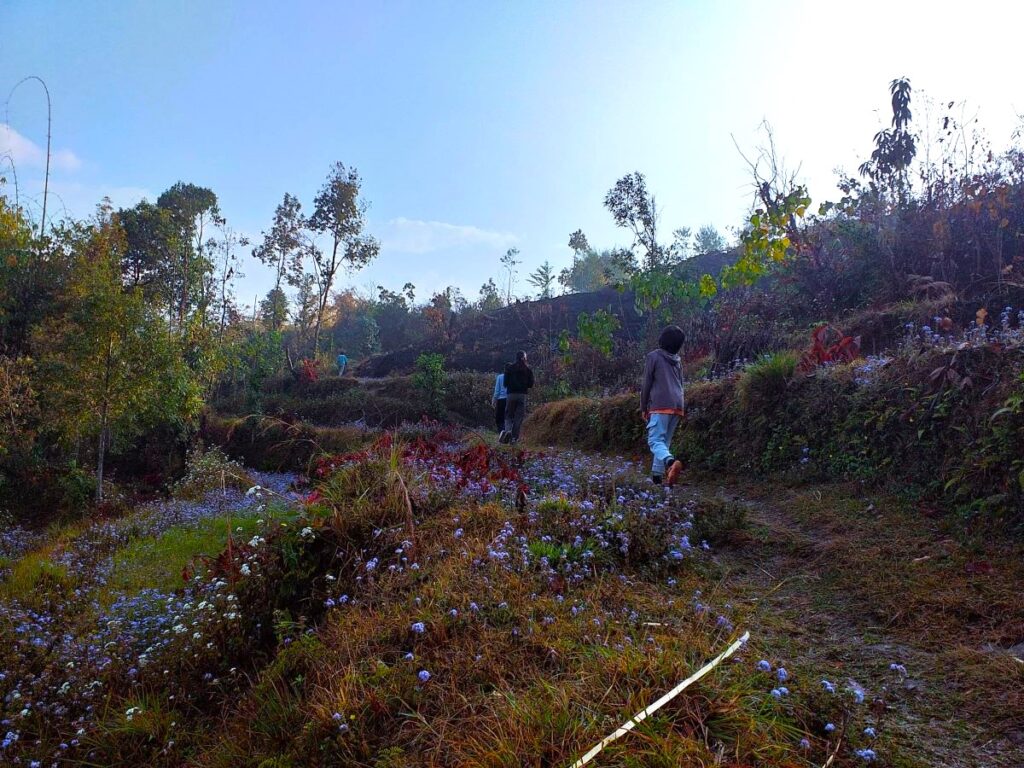
We are on the edge of a precipice. A precipice where we are losing all the wild places on this planet.
Wild places glow with life force. And this life force sustains us and every living breathing creature. But most of us have forgotten how to listen, how to feel, and how to see indiscriminately in our surroundings.
We can create a web of interconnected spaces to be home for all creatures – above, below and alongside us. Allow the restoration and resurgence of the native ecosystems; the native weeds, shrubs, trees to come out and so nature can heal herself. Everything that she needs is already in herself. So all we need to do is step back and give space to the wilderness. It may seem chaotic in our limited perspectives but nature has her ways of spinning the most intricate and intriguing web of growth. Her world wide web could whip us like a child, strip us of our destructive toys and grip us back into submission. Perhaps we need reminding that if we stray for too long from our responsibilities, she would take back the stage and outshine any human network to tip the scales.
“…we know the sea to be an everlasting terra incognito, …Columbus sailed over numberless unknown worlds to discover his one superficial western one; though, by vast odds, the most terrific of all mortal disasters have immemorially and indiscriminately befallen tens of hundreds of thousands of those who have gone upon the waters; though but a moment’s consideration will teach, that however baby man may brag of his science and skill, and however much, in a flattering future, that science and skill may augment, yet forever and forever, to the crack of doom, the sea will insult and murder him, and pulverise the stateliest, stiffest frigate he can make; nevertheless, by the continual repetition of these very impressions, man has lost that sense of the full awfulness of the sea which aboriginally belongs to it.”
We aspire to be both guardians and gardeners. We want to grow our food. We also want the land itself to become what she wants to be, evolving into her authentic expression instead of imposing our preconceived notions upon it. Gardens, in essence, are creative constructs akin to outdoor rooms. They have become so comfortable that the battle against nature is perpetual. Let us give in to symbiosis and make it our flight, not plight. I believe we can take some and leave some for others as well. And then work out the dance between the loose boundaries, if any.
“Consider the subtleness of the sea; how its most dreaded creatures glide under water, unapparent for the most part, and treacherously hidden beneath the loveliest tint of azure. Consider also the devilish brilliance and beauty of many of its most remorseless tribes, as the dainty embellished shape of many species of sharks. Consider once more, the universal cannibalism of the sea; all whose creatures prey upon each other, carrying on eternal war since the world began.
Consider all this, and then turn to this green, gentle and most docile earth; consider them both, the sea and the land; and do you not find a strange analogy to something in yourself? For as this appalling ocean surrounds the verdant land, so in the soul of man there lies one insular Tahiti, full of peace and joy, but encompassed by all the horrors of the half known life.”
As we stand on the edge of this precipice, the choices we make will shape the legacy we leave for future generations, determining whether they inherit a world teeming with life force or one diminished by our neglect.



Notes: These wild perennials dot our terraces, fields, boundaries, edges of pathways and walkways, and borrow shade from our young conifers. Whilst winter fades, the colourful bubs awaken in glee and glisten in multitude and in glorious sunshine. The lilac Floss Flower (Ageratum Houstonianum), yellow Cotton Weed (Pseudognaphalium Affine) and blue Himalayan Gentian (Gentiana Pedicellata) give themselves freely and we cannot help but tread carefully alongside them.
All quotations from Herman Melville, Moby Dick.
Writing inspired by the work of Mary Reynolds.


